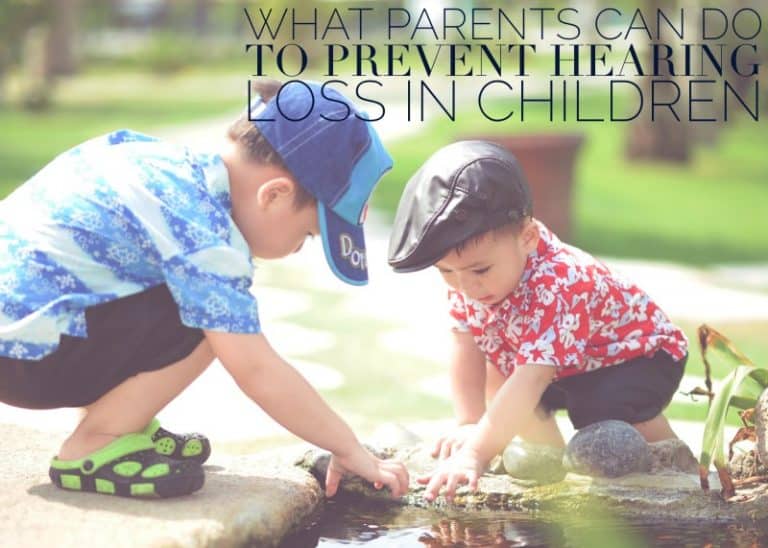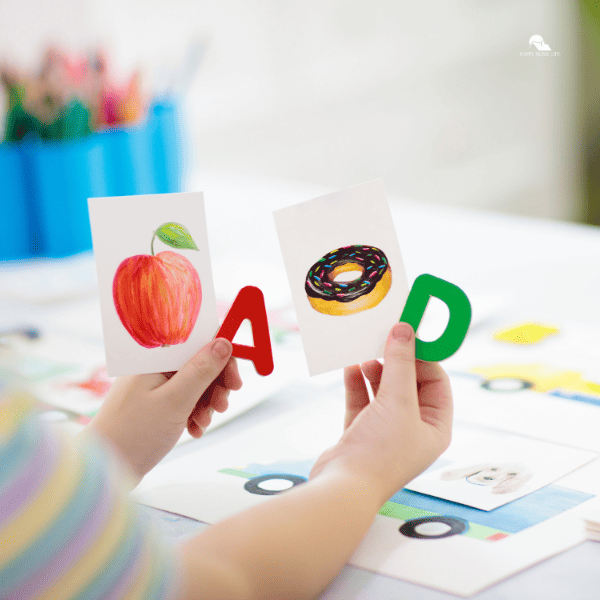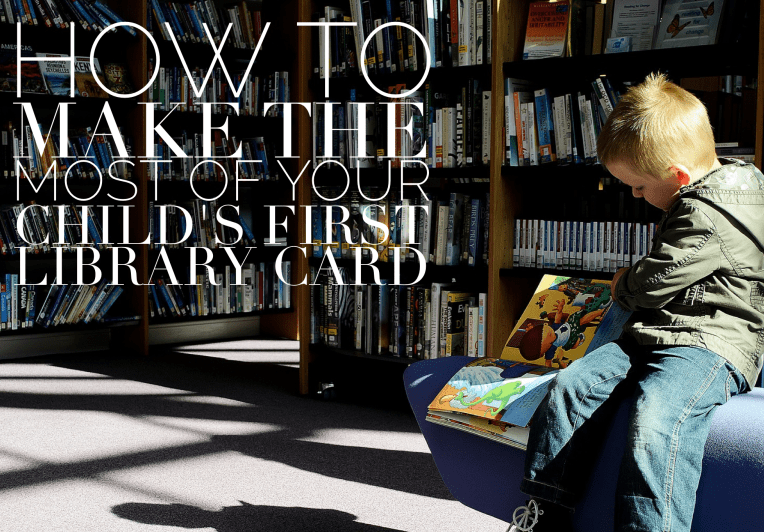Bathing your newborn is probably one of the scariest things to face as a new parent. You don’t want your baby to get overwhelmed in the water, you don’t want the water to be too hot or cold, you don’t want them to accidentally slip out of your hands as you lift them out – there are a lot of worries flurrying through your head right now!
Which is why we’ve put this little guide together for you. Bathing a newborn needn’t be complicated, and the more you know now, in your late stages of pregnancy or while you’re still waiting to head home after the birth, the better! Here’s what you need to know about bath time, as well as creating a routine, when you’re a new parent.
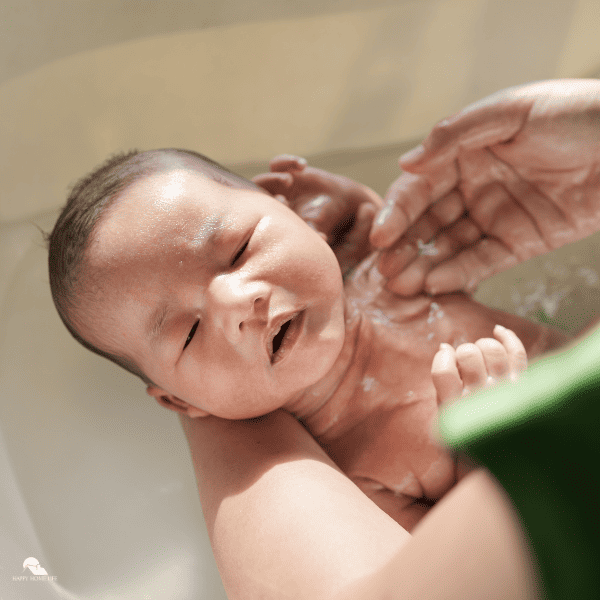
Warm Up the Bathroom
Your baby isn’t going to be capable of regulating their internal temperature until they’re about 9 months old, so you’re going to need to do the bulk of the work for them. This means warming up the bathroom before you bring your newborn in for their first bath time experience.
Make sure you’ve popped the heating on, make sure there’s some hot water in the pipes, and don’t unwrap your little bundle of joy until they’re just about to go in the baby bath. Once they’re out again, wrap them up immediately and think about popping their clothes on the radiator ahead of time.
Prepare Your Station
Bathing your baby requires both hands on the task at all times. This means you can’t just walk away when you need to grab something else, so prepare your station ahead of time. Make sure you’ve got the baby seat or bath placed securely on a rubber mat, at least two towels next to you, some cotton wool for drying face and skin folds, and some baby friendly soap.
As far as the temperature of the water goes, make sure it’s lukewarm to the touch, and any hot you’ve poured in is tempered with plenty of cold. Babies don’t react well to temperatures above this, so keep it on just the right side of warm.
All of these items will make bath time a lot easier on both you and your child, so get them together and make sure they’re right in front or next to you once your child has been lowered into the bath and is safely held.
Keep the Bath Shallow
If you’ve not got a proper bath seat for your newborn to use, use a wide and shallow bowl such as a washing up bowl, that’s been well sanitized and is ready for baby use. You don’t really want the water level to come up any higher than about 10 cm, as this means your child can sit in the water without it being overbearing in any way.
Don’t forget that new babies are not old enough to have anything in their bath, so don’t worry about trying to get toys or anything just yet. Later down the line you may want to look into the best bath toys for kids, but in the newborn stage it just isn’t necessary and causes you more to think about.
You can then wash them using the ‘pool,’ keeping their head dry until the time comes to wash their hair separately from the rest of the bath.
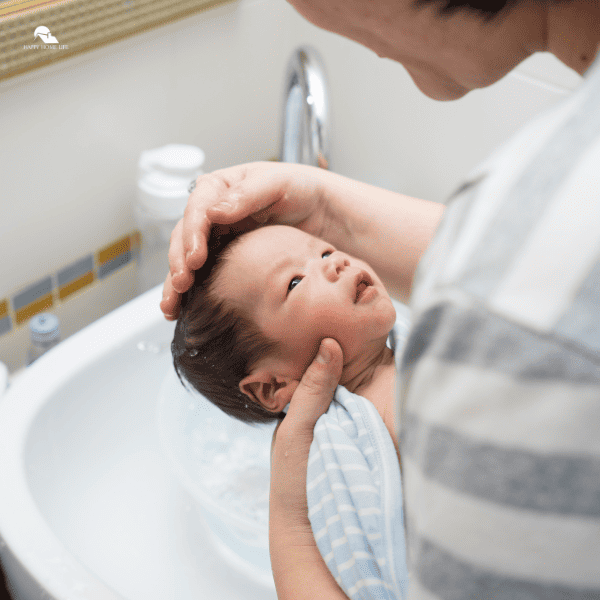
Hold Your Baby Right
Holding your baby in the bath is probably the number one thing you’re scared about. You don’t want to hold them in an incorrect way, making them feel anxious and unsafe, even as you do your best to comfort them.
The main thing you want to do is hold your baby’s head and shoulders, to ensure you’re supporting their neck as you lower them. Use one hand for this, and then the other to wash them with. Try to keep them in sitting position, so their own weight doesn’t become too much for them. Then, if you’re able to, spread the hand holding them around to one of their arms as well.
Watch for Blemishes on Baby’s Skin
Bath time is the perfect opportunity to check your baby over and make sure there are no skin problems, such as a rash, eczema or dry skin. Washing their skin can even make small and otherwise invisible patches show up, so make sure you have a good once over before you dress your baby for bedtime.
Keep an eye out for any discolorations, spots, or red areas that could be a cause for concern. If you find any, there’s no need to immediately panic, but be sure to bring it up at the next milestone meeting you have with a midwife or doctor. If you’re really worried, or if you find more blemishes the morning after, stay calm and book an earlier appointment.
Carefully ‘Spoon’ Water Over Your Child
Position your free hand as a spoon and then use it to carefully lift and pour water over your baby. Be sure you only do this from the neck down. If you want to clean your baby’s face, use cotton wool. You can wet this, squeeze most of it out, and then wipe around your child’s eyes, nose, and mouth. This will help to keep tears to a minimum during bath time, and will allow you to have more control over the way your child is washed.
Dry Softly and Gently
Once you’re all done with the washing, get your baby wrapped up immediately and get them dry. Make sure you move the towel softly over their skin, as abrasion is easy at this age.
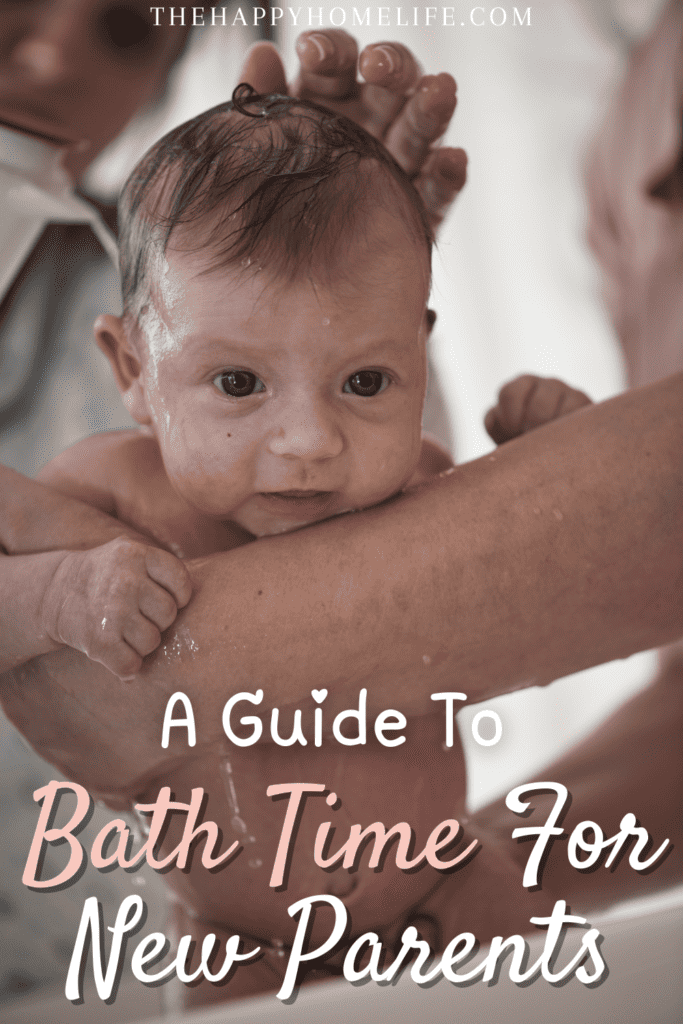
Consider a Massage
Massaging your newborn can help with their aches, which they’re likely to be feeling a lot of during the first few months of their life as they grow. Pop some baby oil on your hands and then gently use your fingers to rub your baby’s arms, legs, and back.
Giving your newborn a bath is part of their usual routine. Don’t let yourself be afraid of it! You can conquer the nerves the first time round, and if you’re ever confused about what to do next, be sure to talk to your midwife, doula, or your own parents. Trust your own instincts, double check that the bathwater is suitable, and then make sure bath time is fun for everyone!

